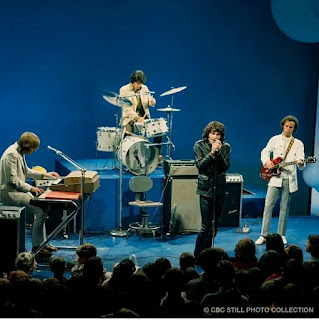RAY MANZAREK'S SOLO IN THE DOORS' "LIGHT MY FIRE"
"Light My Fire" by The Doors is a unique song in the 1967 musical landscape.
This is not only due to the song's unmistakable beauty and undeniable
originality. What distinguishes this tune from other top-quality releases in
that magical year for music are the two long solos that occupy its central
part.
In the context of '60s rock, these solos are simultaneously an artistic
novelty, a musical innovation, and a concrete manifestation of the potential of
an exceptional group.
The first instrument to embark on its articulate and solitary journey is
the electric organ, played by Ray Manzarek. Let's examine its general
conception and particularities.
The solo begins at min. 1.14 and lasts for around two minutes (quite a
gamble for the rock genre in 1967), ending at min. 3.08.
Overall, the musician's style is influenced by a vague but identifiable
jazz inspiration, evident in its flowing and relaxed nature.
Despite this influence, Manzarek's work remains firmly rooted in the
rock genre.
Ray Manzarek's passion for jazz, particularly the hard bop genre, is
well known, and this tendency is particularly evident in The Doors' early work
(notably, “Light My Fire” was recorded in late summer 1966).
In the present case, the precise jazz reference appears to be jazz soul,
a subgenre of hard bop that emerged in the early 1960s.
This genre of jazz is characterized by greater linearity in the solos
than in hard bop, as well as a regular rhythm that is both relaxed and
engaging.
Building on this, we can see how Manzarek incorporates jazz soul characteristics
into the rock music played by The Doors.
The resulting combination of jazz soul and rock is a solo with four main
features:
- The general fluidity of the sound.
- The continuous construction of short and catchy sonic figures that
create constant interest.
- A medium tempo that prevents distraction.
- A spacious and bright sound that conveys a sense of smooth dynamism.
For the instrumental section of “Light My Fire”, Manzarek played the
high notes of the electric organ (a Vox Continental) with his right hand only,
using the rightmost keys on the keyboard. Meanwhile, his left hand played the
Fender Rhodes Piano Bass, a small keyboard that emulates the electric bass
register.
He favors the flow of single notes, only employing chords to a lesser
extent.
Two more peculiar features of Manzarek's solo should be highlighted.
Firstly, there is the range of notes and chords that make up the
instrumental path created by the musician.
In fact, The Doors' keyboardist uses the electric organ's typically
elongated and pervasive sound to repeatedly prolong the notes, thus creating
the solo's distinctive atmosphere. Longer notes make it easier to follow the
solo as it unfolds.
The second peculiarity is the frequent repetition of the melodic figures
conceived by Manzarek.
The purpose of this device is once again to make the solo accessible to
the listener, ensuring that the motifs encountered along the path traced by the
electric organ can be assimilated because of their repetition.
Such repetitions can be heard, for instance, from min. 1:27 to min. 1:34
or from min. 1:42 to min. 1:49.
In some cases, the short, charming and imaginative themes developed by
the keyboardist are repeated three times in a row, for example from min. 1:57
to min. 2:07; from min. 2:11 to min. 2:21; and from min. 2:26 to min. 2:36.
Clearly, the intention here was to prioritize accessible charm over pure
technique without diminishing the solo's impact.
In conclusion, this solo stands out in the rock organ repertoire in
terms of quality, and it is undoubtedly the most beautiful and meaningful
episode in Ray Manzarek's career.
P.S.: My book "The Doors Through Strange Days", the most comprehensive journey ever made through The Doors' second LP, is available on Amazon.com, .uk, .mx, .it, etc.
Here’s a link:




Comments
Post a Comment